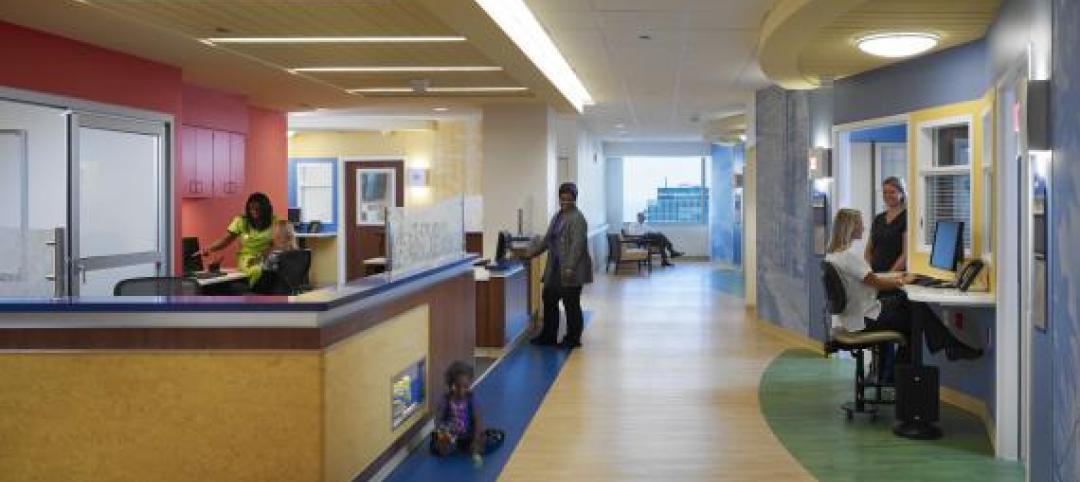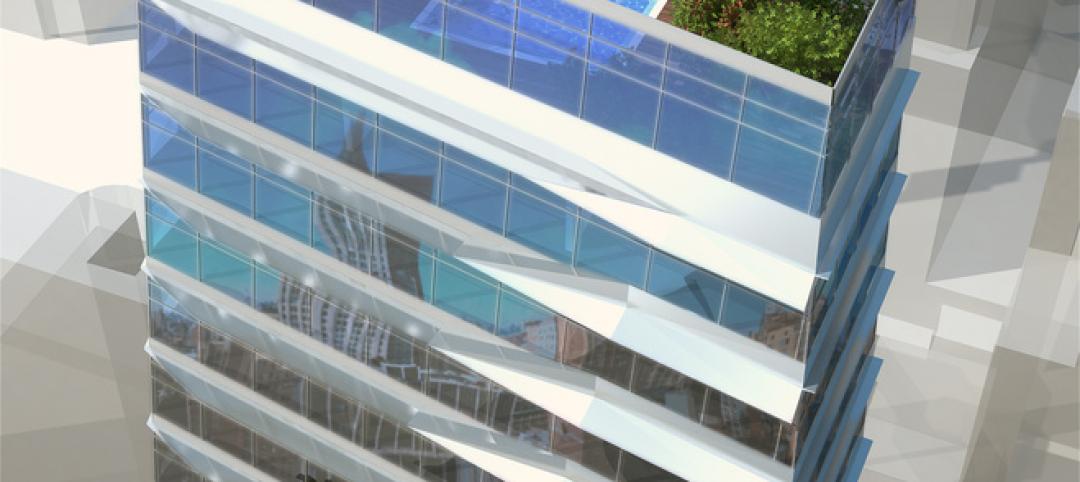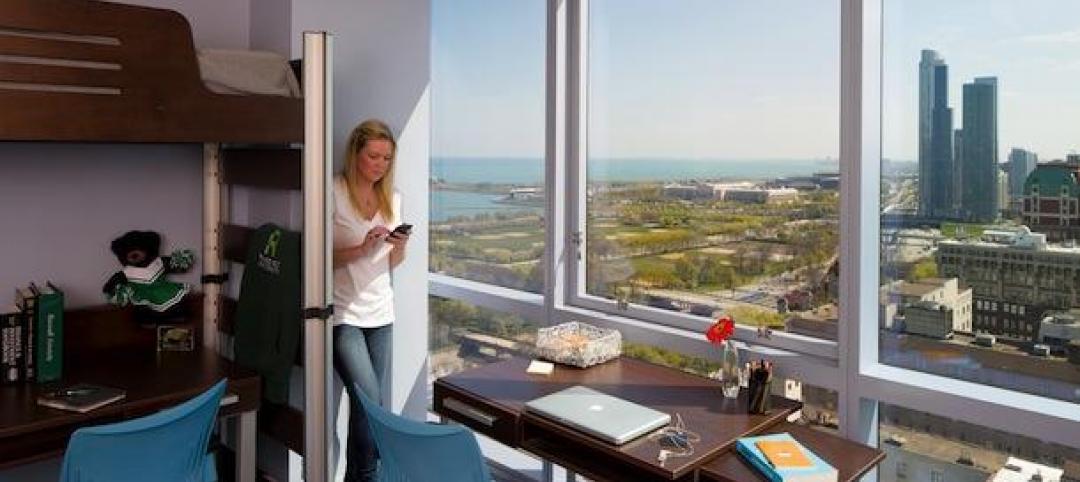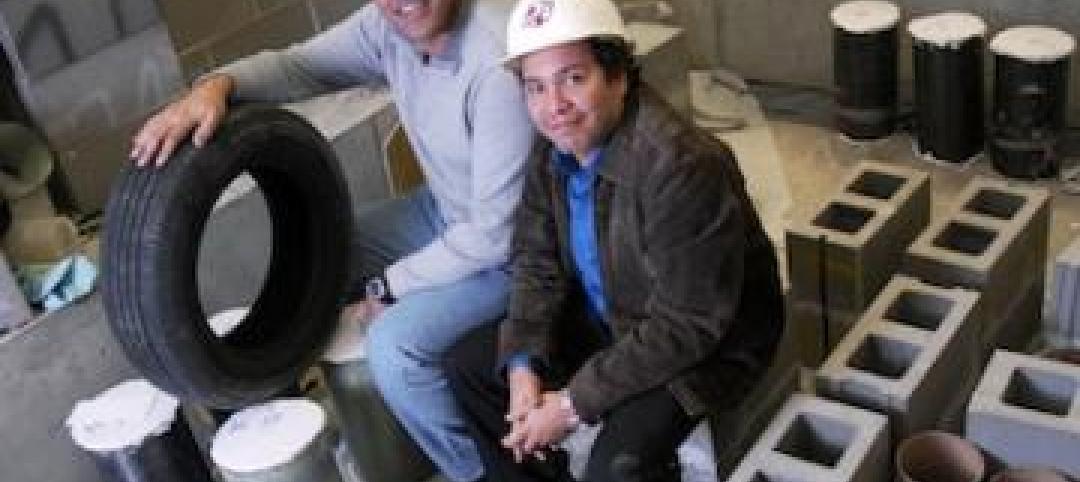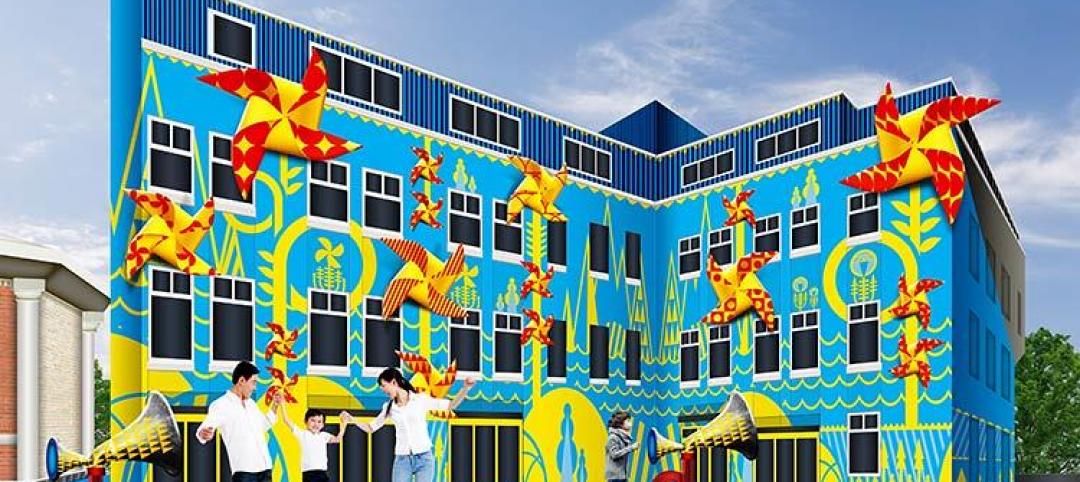Completed in 1932, the Potter County Courthouse is recognized as one of the most significant high-rise Art Deco courthouses in Texas, and among the most prominent in the country. Local architect W.C. Townes, of Townes, Lightfoot and Funk, designed the eight-story structure with a terra cotta fac?ade adorned in decorative figural and botanical bas-relief depicting the region’s cultural and natural history.
After more than 80 years of use, the courthouse was long overdue for an interior modernization and exterior restoration. The $15.5 million effort was undertaken as part of the Texas Historic Courthouse Preservation Program, a state-funded program that covered about one-third of the project’s cost. It included a complete fac?ade restoration—including repairing and re-anchoring damaged units and replacing mortar joints—and an overhaul of the interior spaces to meet current building and accessibility codes and the operational and functional needs of the county’s administrative offices and courts.
The original mechanical systems were replaced with a four-pipe scheme utilizing a 200-ton chiller and 250-ton cooling tower. An additional 60-ton, air-cooled chiller was placed on the roof, and 12 air-handling units were located on the various roofs at the fifth, sixth, and eighth floors. The new system, combined with automatic controls and enhanced thermal roof insulation, is expected to reduce energy costs by 20% annually.
POTTER COUNTY COURTHOUSE
Amarillo, TexasBuilding TeamSubmitting firm: JQ (structural engineer)Owner: Potter CountyArchitect: ArchiTexasMEP engineer: Johnson Consulting EngineersConstruction manager: Southwest General ContractorsGeneral contractor: Journeyman ConstructionGeneral InformationSize: 62,390 sfConstruction cost: $15.5 millionConstruction time: November 2009 to August 2012Delivery method: Design-bid-build
The Reconstruction Awards judges hailed the Building Team for its painstaking efforts in preserving the historical elements of the building while modernizing the structure. To accommodate the new mechanical systems and other modern amenities, such as fire/life safety systems, information technology infrastructure, and high-density shelving units, the team devised several creative structural solutions:
• Tunnel expansion. To preserve the courthouse’s original, first-floor terrazzo floors, the team utilized the facility’s underfloor utility tunnels to run new insulated piping. Deemed inadequate to handle the new systems, the existing tunnels had to be carefully reinforced and expanded. In total, more than 200 feet of concrete- and masonry-lined tunnel was added on to the existing layout, allowing for the terrazzo flooring to remain intact.
• Clay tile floor removal. The added weight of the rooftop mechanical units and high-density shelving meant that certain areas of the existing structure on floors two through six would need to be reinforced. However, because the plaster ceiling finish was applied directly to the original clay tile and reinforced concrete joist floor system, structural members could not be inserted below the original ceiling level.
The solution involved removing portions of the original clay tile forms to allow the installation of new steel beams constructed from steel T-sections between the existing concrete joists, thereby increasing the floor load capacity. The use of T-sections in lieu of standard wide-flange sections facilitated access for completion of field connections to the existing structure and the placement of non-shrink grout between the top of the steel members and the underside of the original floor slab to provide full load transfer.
• Use of CFRP strips. In order to accommodate new stairs, vertical chases, and mechanical infrastructure, numerous openings of various sizes had to be cut into the slab on floors seven and eight. The original floor structure on these levels is eight-inch reinforced concrete slabs spanning the concrete beams.
To maintain the structural integrity and continuity of the floor slabs, strips of laminated, 1?4-inch-thick carbon fiber reinforcement polymer (CFRP) were used to redistribute the loads adjacent to and around the openings. Larger openings for the stairs and chases called for additional reinforcement, and CFRP strips were placed on top or below the slab, corresponding to the tension zone of the slab system.
In several locations, strips were placed in both directions around the openings to properly distribute the load.
“We liked how the team carefully pre- served the clay-tile floor and the reinforced concrete slab with the strengthening schemes hidden out of sight,” said judge K. Nam Shiu, Senior VP, Director of Restoration Services, Walker Restoration Consultants (www.walkerrestoration.com). “They successfully provided up-to-date floor functionality while keeping the layout and look of the original building.”
The Building Team took careful measures to avoid disturbing the historical elements in the building. This included expanding an existing utility tunnel (above) and applying special structural reinforcement polymer to select concrete frame members (top). Photo: Brenda Bagot
Related Stories
| Feb 18, 2014
Illinois leads Top 10 states for LEED in annual USGBC ranking
The U.S. Green Building Council has released its ranking of the Top 10 States for LEED, the world’s most widely used and recognized green building rating system.
| Feb 18, 2014
Study: 90% of healthcare providers say Affordable Care Act is 'step forward,' but major revisions needed
Providers are excited about opportunities to address long-term health issues in the U.S., but worries about the transition persist, according to a new study by Mortenson Construction.
| Feb 17, 2014
SmithGroupJJR President and CEO Carl Roehling appointed to serve on the AIA/AGC Joint Committee
Carl Roehling, FAIA, LEED AP BD+C, president & CEO of SmithGroupJJR, has been appointed to serve on the Joint Committee of The American Institute of Architects (AIA) and The Associated General Contractors of America (AGC).
| Feb 17, 2014
Developer plans to 'crowdfund' extended stay hotel in Manhattan
Want to own a piece of Manhattan hotel real estate? Developer Rodrigo Nino is inviting individual investors to put up $100,000 each for his latest project, 17 John.
| Feb 17, 2014
Call for Entries: 17th annual Building Team Awards - Deadline Extended!
BD+C's Building Team Awards is the industry's only recognition program to honor projects that achieve excellence in both design/construction and collaboration of the AEC/O team. The deadline has been extended to March 14, 2014.
| Feb 17, 2014
GBI to Offer AIA Approved Course Free for 60 Days to Train New Green Globes Professionals
The Green Building Initiative™ (GBI) announced today that between Feb. 13 and April 15 it will provide free access to its online certification course for Green Globes Professionals™ (GGPs). GGPs help guide building projects in achieving Green Globes® ratings, awarded for environmentally-focused design and construction.
| Feb 14, 2014
ASHRAE, Green Grid team up on energy-efficiency guide for data centers
Vendor-neutral publication examines aspects of the popular power usage effectiveness (PUE) metric.
| Feb 14, 2014
Scrap tires used to boost masonry blocks at Missouri University of S&T
Research could lead to blocks that use waste material and have seismic and insulating benefits.
| Feb 14, 2014
Giant interactive pinwheel adds fun to museum exterior
The proposed design for the Santa Cruz Museum of Art and History features a 10-foot pinwheel that can be activated by passersby.
| Feb 14, 2014
First look: Kentucky's Rupp Arena to get re-clad as part of $310M makeover
Rupp Arena will get a 40-foot high glass façade and a new concourse, but will retain many of its iconic design elements.







